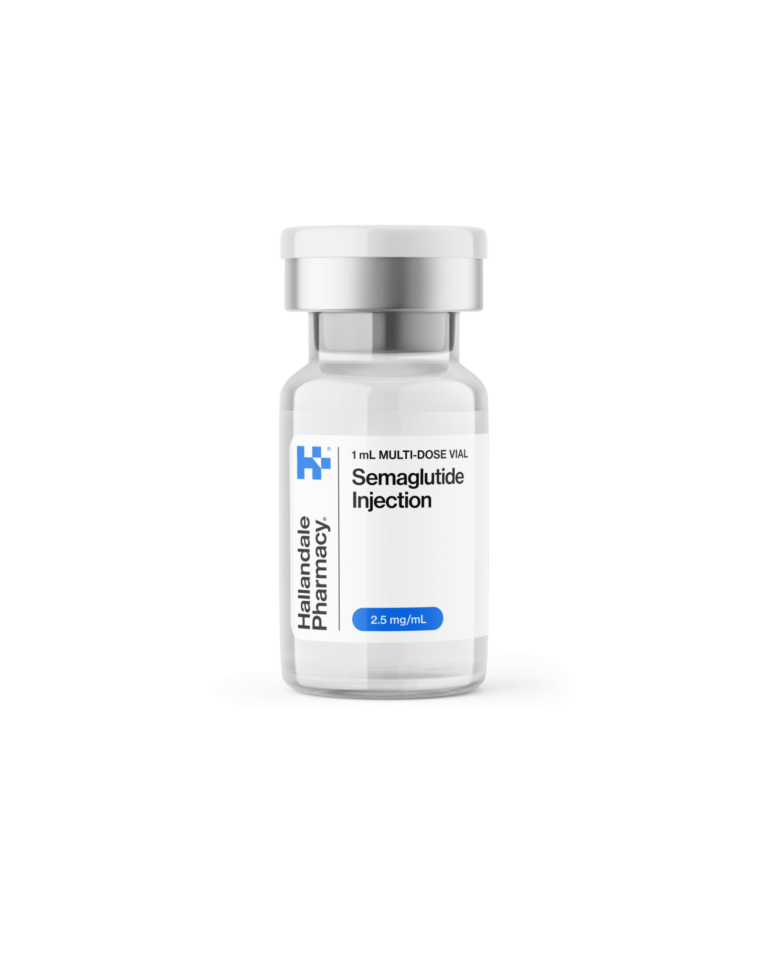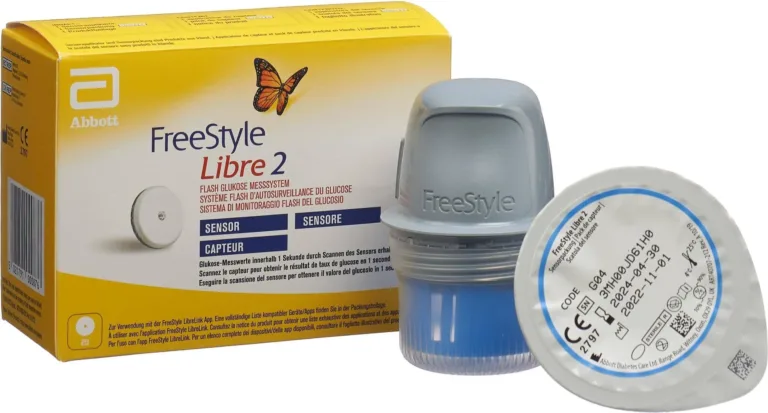
Lasts 3 months for a new user.*
Click to see suggested schedule. $675/vial
30 stool softener pills
30 prescription anti-nausea pills
One sensor lasts 2 weeks.
Works with smart phones. App download required.
Semaglutide is a drug that assists with weight loss by curbing appetite and cravings. It functions as a glucagon-like peptide-1 (GLP-1) receptor agonist. This means it enhances insulin release when glucose levels rise and decreases the production of ghrelin, the hormone responsible for hunger, in the stomach. Consequently, it promotes a feeling of fullness and diminishes hunger signals across the body.
Inject into your fat once per week. Keep medication refrigerated.
For new users of semaglutide the dosing schedule is as follows:
Month 1: 0.25 mg/week (10 units on syringe)
Month 2: 0.5 mg /week (20 units on syringe)
Month 3: 1.0 mg/week (40 units on syringe)
If you feel good and are loosing weight you can stay at lower dose longer. You’ll get more doses out of the same bottle. You will need to purchase extra syringes (Amazon) if you decide to do that. Always inject with a clean syringe. They are not reusable.
BMI of 25 or greater classified as overweight. Semaglutide is used off label for this BMI.
The most common side effects of Semaglutide include nausea, diarrhea, vomiting, constipation, stomach (abdominal) pain, indigestion, injection site reactions, feeling tired, allergic reactions, belching, hair loss, and heartburn. There are more rare side effects which include pancreatitis, gallstones, risk of thyroid c cell tumors, and kidney problems. Taking medications are not risk free, please discuss any concerns you have with your provider.

Each sensor lasts 2 weeks. One sensor $110 total.
One of the keys to weight loss is stable blood sugar. See what foods spike your sugar and develop your perfect weight loss nutritional plan.
Simple application device included to apply sticky sensor.
Continuous Glucose Monitoring (CGM) require the attachment of a sensor, usually on the upper arm or the abdomen, which adheres securely due to its sticky surface. The sensor monitors glucose levels continuously and needs to be replaced every 14 days.
Each CGM device includes a wireless transmitter connected to the sensor that relays glucose readings to the Freestyle Libre App a smartphone app.
No matter your activity—whether sleeping, working, eating, showering, or exercising—the CGM device consistently tracks your glucose levels.
Regulating blood sugar is crucial for effective weight management. Consuming a diet high in sugars and starchy carbohydrates often results in frequent spikes and drops in blood sugar levels. Elevated blood sugar triggers insulin release, which transports sugar into cells to normalize blood sugar levels. This sugar may be stored as glycogen in liver and muscle cells, but once these storage capacities are reached, excess sugar is converted into fat for future energy use, leading to weight gain.
Stabilizing blood sugar levels provides your body with a steady supply of energy, helping to avoid energy dips, hunger, cravings, and subsequent weight gain.
By using a Continuous Glucose Monitor (CGM), you can monitor how different foods affect your blood sugar levels and adjust your intake accordingly. Managing and lowering your blood sugar can encourage your body to utilize stored fat for energy, aiding in weight loss.
Actionable Insights: A CGM provides valuable data on how individual foods affect your body. For instance, foods perceived as “healthy” may actually impede weight loss, a fact only discernible through direct glucose monitoring.
Discouraging Problematic Foods: CGM usage can deter the consumption of foods linked to weight gain, such as French fries, potatoes, potato chips, sugary drinks, and refined grains, by revealing their immediate impact on blood sugar levels.
Promoting Supportive Foods: Conversely, CGM data often supports the inclusion of foods that stabilize blood glucose levels—typically recommended for weight loss—including lean proteins, non-starchy vegetables, and nuts. These foods help maintain a stable glucose curve, which is crucial for weight management.
Diet Optimization: Monitoring blood sugar helps individuals understand how to balance carbohydrates with proteins and fats to mitigate blood sugar spikes, manage portion sizes effectively, and identify hidden sugars, ultimately refining their diet to reduce cravings.
Over time, the feedback from a CGM can guide users towards dietary patterns that align with their weight loss objectives, making it a valuable tool for achieving long-term health goals.
No. Although this is a prescription item since it’s cash pay you don’t have to meet insurance requirements of being diabetic. This is used off label in non diabetics.
Purchase as many sensors as you want. Each sensor lasts 2 weeks and costs $110.
Booking services with Bloom Health does not guarantee the writing or dispensing of a prescription. Individual results may vary. The information provided on this website is for informational purposes and not a substitute for professional medical advice, diagnosis, or treatment. If you have questions or concerns about your health, please talk to your medical provider. Images depicted on this site are stock or actor portrayal and do not represent actual patients. This site is an advertisement for services and not any specific medication. Medications displayed are those that may be used in a service package and not for sale individually.
Copyright 2023 © All Right Reserved Design by Bloom Health
Week 1 -4: 0.25 mg
Week 4-8: 0.5 mg
Week 9-12: 1 mg